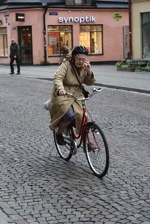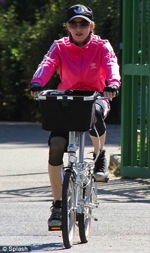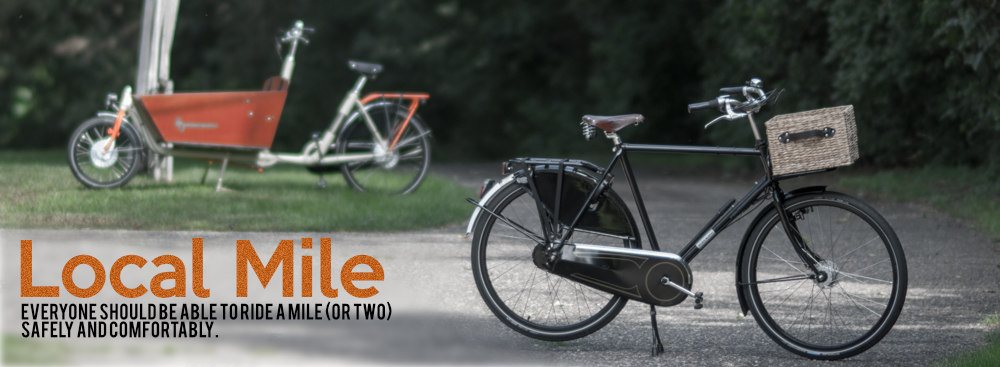 There’s an interesting symbiosis happening between young and old – cycling.
There’s an interesting symbiosis happening between young and old – cycling.
Not spandex clad recreational, but whatever we already have on hop on the bike and ride to lunch.
While cycling is growing across all age groups, these two, under 35 and over 55, have been growing the fastest, and not so much for recreation, but for daily transportation. At the same time, the average number of miles driven by 16 to 34 year olds fell 23 percent; from 10,300 in 2001 to 7,900 in 2009. By 2010 the number of these young folks with a drivers license had fallen to a low of 73 percent. Both were still flat as of January 2015.
Venerable car magazines Motor Trend and Road & Track have been wondering why young people no longer seem interested in driving or owning a car. And AAA, the American Automobile Association, is introducing roadside assistance for cyclists in many cities.

Both young and old appear driven initially by a combination of money and health. A number of social scientists have pointed out that young folks today would much rather have the latest phone than a car (though many are OK with both). Interestingly, this applies to some of the older folk as well! Once they begin cycling though, their reasons shift to enjoyment and convenience.
Here’s a quick look at why we’ve seen this growth and why cycling and walking are expected to grow even faster in the coming years.
Enjoyment. Riding a bike is fun. Many of us rent bikes when we’re on vacation and it’s just as fun when we’re not on vacation. Well, so long as we have safe and comfortable facilities to ride on.
Convenience. For shorter trips riding a bicycle is often easier and faster than a car.
Health. As much as we may desire it, our bodies are not maintenance free. Next to eating well, moderate routine activity is the best thing we can do for our health. Increasingly we’re learning that short bits of activity spread throughout the day may be much better for us than a massive one hour sweatfest at the gym. Walking and cycling to get where we need to go—active transportation—is one of the best ways to get this activity. Incidentally, driving a car is the least healthy activity, or non-activity, that most of us do each day. It’s even worse than watching TV.
Besides the immediate benefits of reducing our weight and helping us to feel better throughout each day, routine walking and cycling also reduce the likelihood of longer term health issues such as joint problems, cardiovascular disease, diabetes, and Alzheimer’s. These activities also prolong coordination, muscle tone, and mental acuity as we age. Here’s an entertaining 9-minute video on the topic by Dr. Mike Evans.
You also stand a much better chance of surviving any kind of surgery if you regularly ride a bicycle or walk according to a new study from the Royal College of Surgeons in Edinburgh. Deaths after surgery can be as high as 22 percent for those with low levels of fitness but are about 4% for those who regularly ride or walk.
Mental Health. Numerous studies have found that those who are moderately active throughout the day are mentally healthier, more creative, less stressed, and are better able to deal with stress.
Children’s Development. Walking or riding a bike to school helps children’s social, physical, and maturity development in a number of ways such as developing social skills as they interact with other children of varying ages and developing coordination from balancing, pedaling, steering, and watching where they’re going . Both activities require and develop a bit of responsibility and maturity, particularly as they grow older and walk or ride on their own instead of with a parent or as part of a bike train. Cycling properly develops an ability to follow rules and helps them to understand why these rules exist and why it’s important to obey them even when a teacher isn’t watching.
Children’s Academics. We’ve known for some time about the mental benefits of physical activity. To put a point on this, a recent study in Denmark has shown that children who ride a bike to school are about half a year ahead of other children in concentration – a key element of their ability to learn.
Money. Cars aren’t cheap. Even a very basic 4-year-old Chevy Cobalt that you pay $10,000 to purchase will cost you about $41,000 over the next 5 years (depreciation, financing, insurance, maintenance, fuel, tires, brakes, and taxes). And this is assuming you don’t get any costly and insurance rate busting tickets. Each mile we choose not to drive saves us about $1. Or considerably more depending on what we drive or if we have to pay for parking. A four mile round trip to the store costs us about $4 in a car or $0.12 on a bicycle (not including health benefits).
Not owning a car, or having only one instead of two, can save anywhere from $6,200 per year to an average of $9,400 per year, or more. The savings are greater for the couples who are choosing to own only one car and don’t incur costs of a rental car for weekend getaways. This lifestyle choice is also influencing where many choose to live.
Safety. Cycling or walking, on safe and dedicated facilities, is considerably safer than driving a car. Even riding on the road with traffic, if done safely, appears no more dangerous on a bike than in a car (though it may feel more dangerous, statistics say otherwise). On the flip side, many older folk, concerned about endangering others when they drive, are choosing to ride bikes to their morning coffee klatch.
Social. I often don’t even recognize good friends behind the glare of their windshields. Driving is rather anonymous and sometimes almost anti-social. Walking and cycling though, promote social interaction with our neighbors (and most would rather hear our bike than our car).
Altruism. From reducing oil consumption or noise, air, and water pollution to increasing local business, there are a number of altruistic reasons people choose to bike or walk instead of drive. For more on this, turn to
(Oh, and there’s no better way to get that natural northern European windblown look than to get naturally windblown for 15 minutes on your way to work in the morning.)
